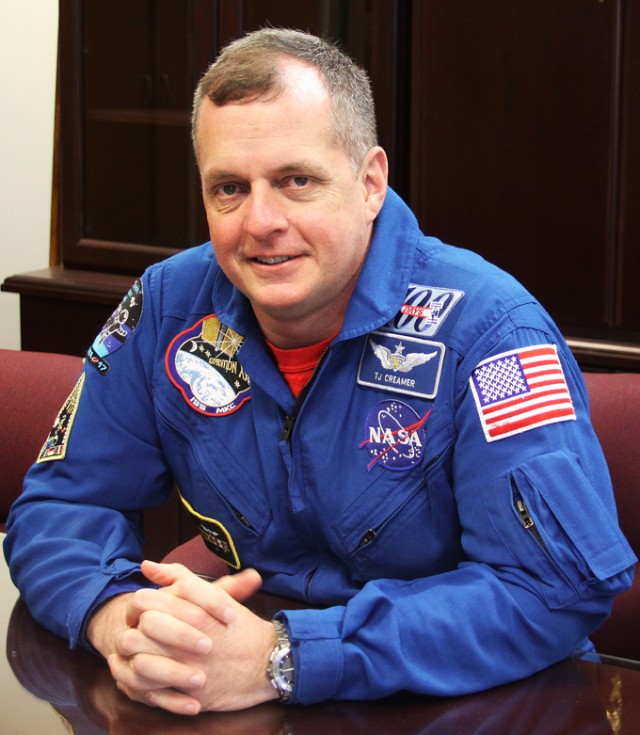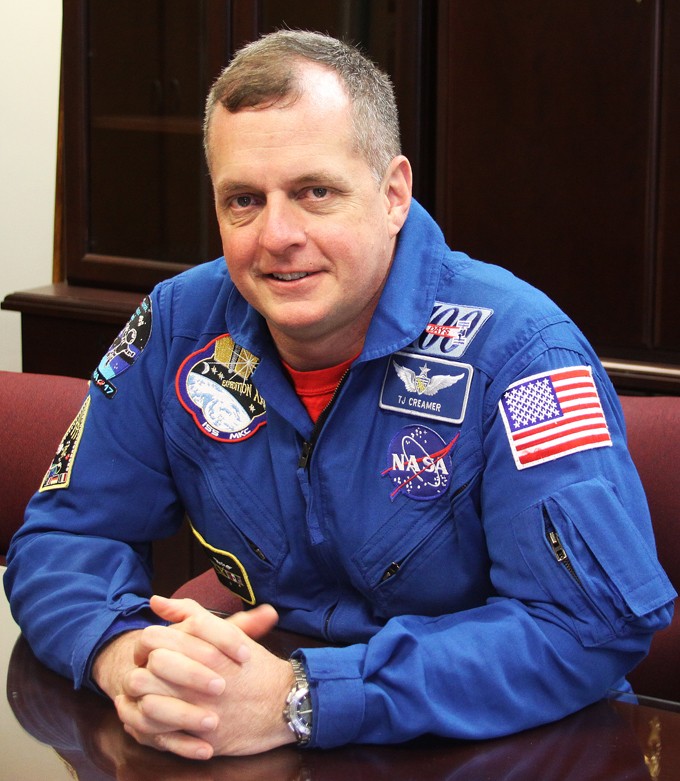WEST POINT, N.Y. (March 9, 2011) -- Space and astronauts have fascinated the nation since military jet fighter pilots began training as America's first astronauts in the 1960s. As the U.S. entered the space race, the likes of Gordon Cooper, John Glenn, Alan Shepard and Virgil Grissom became national heroes who tested the capabilities of humans in space with the Mercury Project.
Flash forward 50-plus years and look at what has been accomplished. American astronauts were the first to plant footsteps on the moon, NASA has sent rockets to Jupiter, landed a rover on Mars to explore the landscape and, with international cooperation, built and developed an orbital research facility known as the International Space Station.
Col. Timothy J. Creamer, Army astronaut, flight engineer and former assistant professor in the West Point Physics Department (1992-95), spoke with cadets March 3, in Robinson Auditorium at the U.S. Military Academy at West Point, N.Y., about what it was like living for more than five months aboard the ISS.
"Our time was allocated to two and one-half hours of exercise per day," Creamer said. "The crew divided the rest of the time to maintenance, research, helping with experiments and observations - plopping down by the window to take photos."
Creamer said exercise and staying healthy is important because after spending time in zero gravity, a certain amount of bone mass is lost, mimicking osteoporosis.
"After completion of the flight, there's intensive rehabilitation needed," Creamer said. "We (on the ISS) are trying to find out how we can solve this problem, which will have implications in the medical field."
Research aboard the ISS has resulted in scientific innovations on earth.
"The clothing that fire fighters wear and cell phones have been some of the innovations first discovered on earlier flights," Creamer said. "Other innovations have been high tech running shoes, heart pumps and smoke detectors."
Creamer said fire and cancer cells in zero-gravity react differently than on earth.
"A flame on earth tends to be cylindrical or cone shaped, like a flame on a candle," he said. "In zero-gravity, the flame is spherical. Learning the direct process by which these things occur, we may learn how to perfectly interrupt the growth of cancer cells. As cancer cells grow in space, the cells get to the size and weight that distort their own formation, they crush themselves."
Creamer flew to the ISS aboard the SoyuzTMA-17 space capsule in Kazakhstan, Russia, on Dec. 21, 2009, and returned June 2.
Creamer is also the first astronaut to send tweets from the ISS through a personal Web connection. Other tweets from space were actually sent by astronauts via e-mail to the ground support personnel who posted them to their Twitter account.
Related Links:
Army astronaut takes command of space station
STAND-TO!: The U.S. Military Academy at West Point


Social Sharing